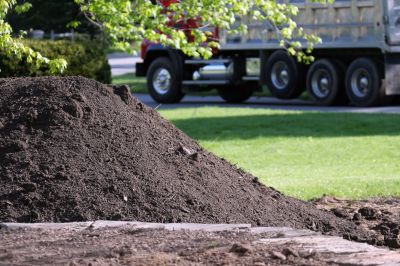Popular Solutions For Dirt Backfillings That Deliver Reliable Results
Discover a range of effective products tailored to simplify your backfilling tasks and improve project stability.
 Dirt backfilling is a fundamental process in construction, landscaping, and repair projects, involving the strategic placement and compaction of soil or other fill materials to restore or create levels, foundations, or support structures. The quality and suitability of backfill products can significantly influence the stability and longevity of a project. Selecting the right materials and tools is essential to ensure proper compaction, drainage, and support, which ultimately affects the durability of the construction.
Dirt backfilling is a fundamental process in construction, landscaping, and repair projects, involving the strategic placement and compaction of soil or other fill materials to restore or create levels, foundations, or support structures. The quality and suitability of backfill products can significantly influence the stability and longevity of a project. Selecting the right materials and tools is essential to ensure proper compaction, drainage, and support, which ultimately affects the durability of the construction.
Top Overall Option
General Purpose Soil Mix
A versatile general purpose soil mix combines well-draining components with sufficient nutrients to support various backfilling needs. It is suitable for landscaping, foundation support, and grading projects, offering a balanced blend that promotes compaction and stability. This type of soil is often available in bulk and can be easily shaped and compacted to meet specific project requirements.
Types of Products For Dirt Backfillings
Crushed Stone
Provides excellent drainage and stability, ideal for foundation backfill and drainage layers.
Gravel
A versatile material that enhances drainage and compaction in various backfilling applications.
Clay Soil
Used for specific applications requiring high compaction and support, often in retaining walls.
Sandy Soil
Offers good drainage and ease of compaction, suitable for general backfilling tasks.
Topsoil
Primarily used for landscaping and finishing, providing nutrients and a stable base.
Engineered Fill
Specialized materials designed for high load-bearing capacity and stability.
Recycled Concrete Aggregate
Eco-friendly option that provides stability and drainage for backfill projects.
Sand
Offers excellent drainage and ease of compaction, often used in bedding and filling.
Fill Dirt
Standard soil used for general backfilling, available in various compositions.
Limestone Chips
Provides good drainage and aesthetic appeal, suitable for decorative backfill.
Decomposed Granite
Natural material that compacts well and is often used in pathways and drainage layers.
Sand-Clay Mix
Combines drainage of sand with stability of clay for specific backfilling needs.
Popular Choices
Widely used for its drainage properties and ease of compaction in various backfill projects.
A commonly selected soil for general backfilling and grading tasks.
An increasingly popular option for sustainable backfilling with good stability.
Popular for bedding and filling due to its excellent drainage and workability.
Preferred for landscaping and finishing touches after initial backfilling.
Chosen for decorative and functional purposes in drainage and support layers.
Favored for pathways and areas requiring natural aesthetics combined with stability.
A common choice for bedding and backfilling in construction projects.
An eco-conscious option providing stability and good drainage.
Popular for projects requiring high support and minimal settling.
Often used for drainage layers and bedding in construction backfill.
Various mixes tailored for specific backfilling and landscaping needs.
Various products are designed specifically for backfilling applications, ranging from traditional soil mixes to specialized fill materials that improve stability and drainage. For example, some backfill products incorporate gravel or crushed stone to enhance drainage properties, while others are engineered to provide load-bearing strength. Proper selection depends on the project's specific needs, including soil type, load requirements, and environmental conditions.
In addition to fill materials, a wide array of tools and accessories are available to facilitate effective backfilling. These include shovels, tampers, wheelbarrows, and mechanical compactors, each suited to different scales of work. Proper technique and equipment are vital for achieving uniform compaction and avoiding issues such as settling or shifting over time.
Understanding the characteristics of different backfilling products and tools can help ensure successful project outcomes. Whether working on a small landscaping project or large-scale construction, choosing the appropriate materials and equipment can lead to better stability, drainage, and overall performance. Careful planning and informed selection are key to achieving durable and safe results in any backfilling endeavor.
Key Buying Considerations
- Determine the load-bearing requirements of your project to select appropriate fill materials.
- Consider the drainage properties needed for the backfill area to prevent water accumulation.
- Assess soil compatibility with existing ground conditions for optimal stability.
- Choose materials that can be easily compacted to avoid future settling issues.
- Evaluate the environmental conditions, such as moisture levels and weather, which may affect material performance.
- Decide between natural soils and engineered fills based on project specifications.
- Check for material cleanliness and free of debris or contaminants that could compromise stability.
- Estimate the quantity needed accurately to avoid shortages or excess waste.
- Consider the ease of handling and transportation of the materials for efficiency.
- Review local regulations or codes related to backfilling materials and methods.
- Opt for materials that provide consistent quality and uniformity for predictable results.
- Think about future landscaping or aesthetic needs when selecting finishing materials.
- Evaluate the cost-effectiveness of different options in relation to their performance and longevity.
- Ensure compatibility with existing structures or infrastructure to prevent issues over time.
This content may contain affiliate links, and we may earn a commission at no additional cost to you. All product suggestions are based on general suitability for dirt backfilling applications and do not constitute endorsements.
